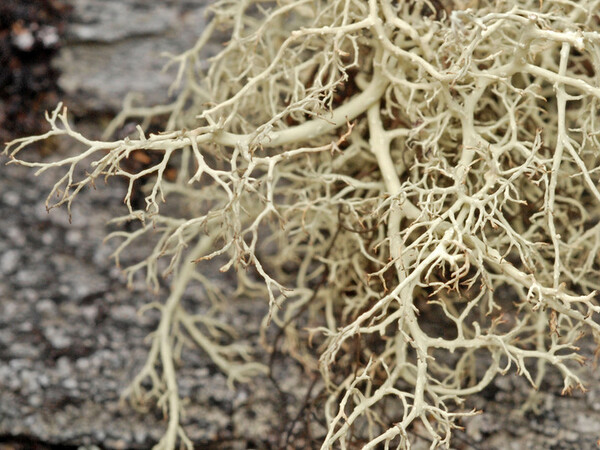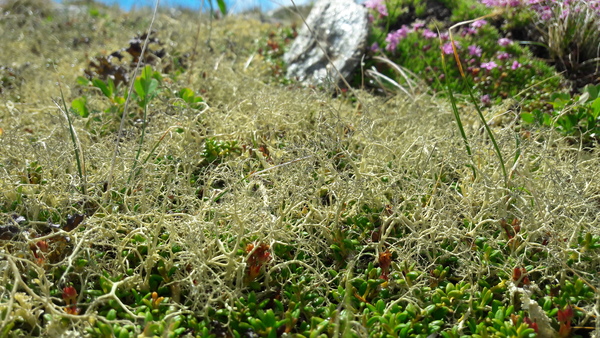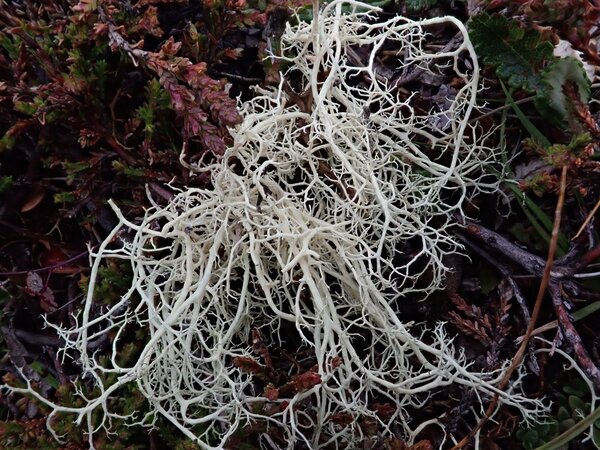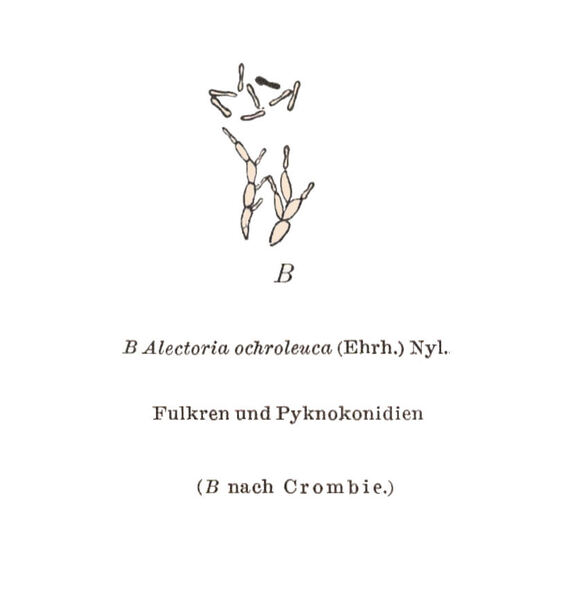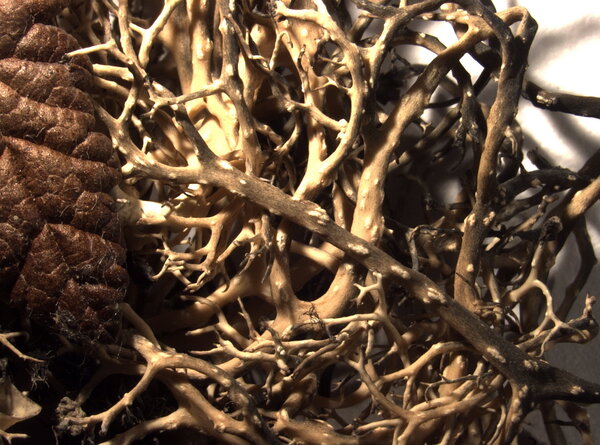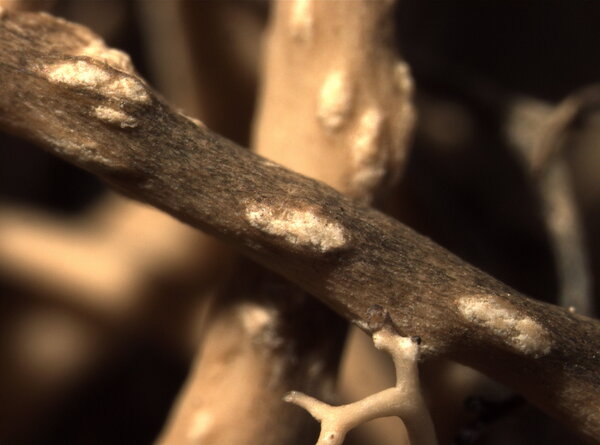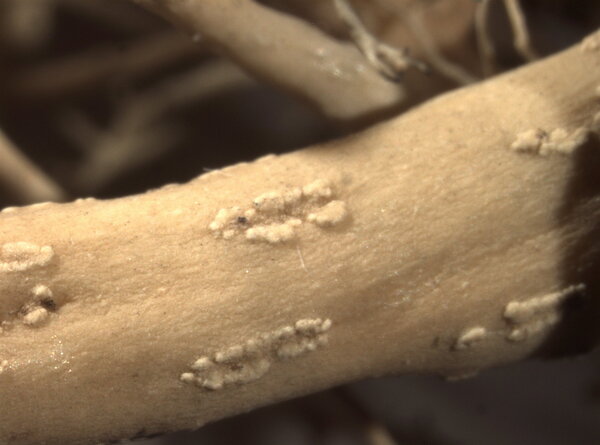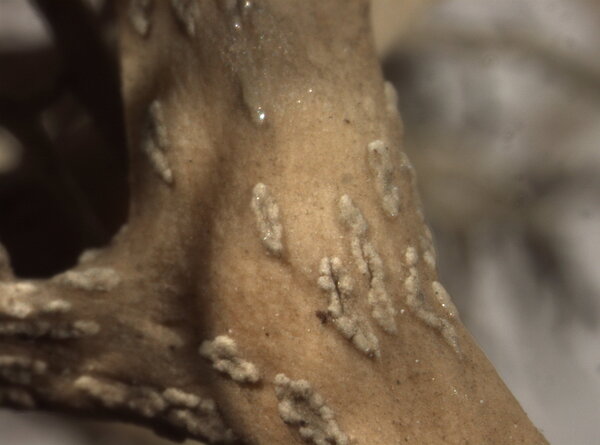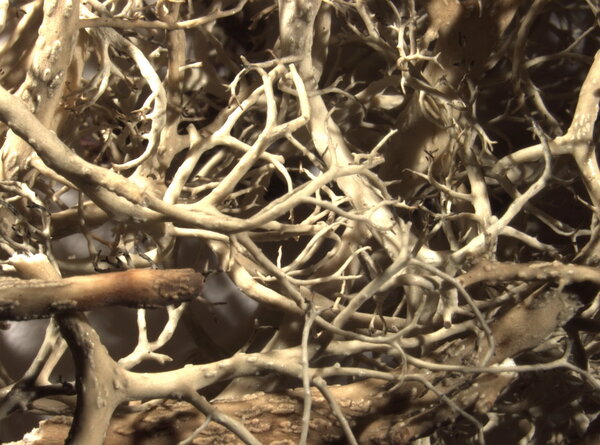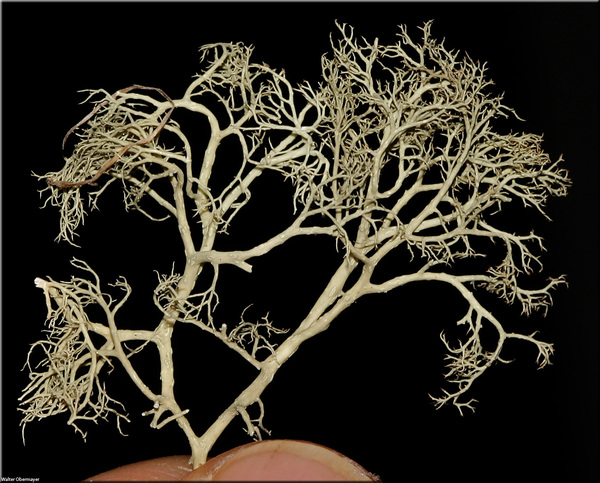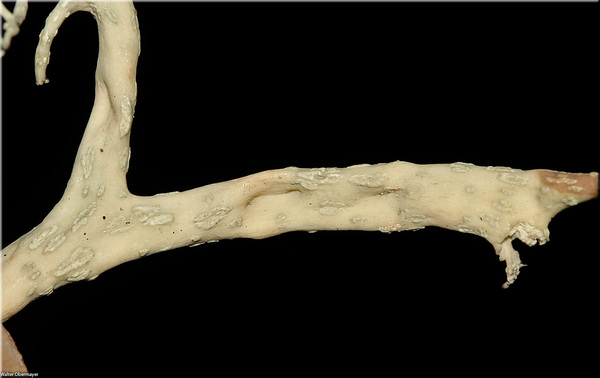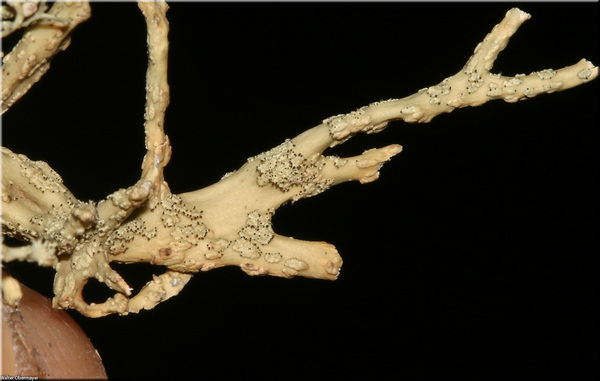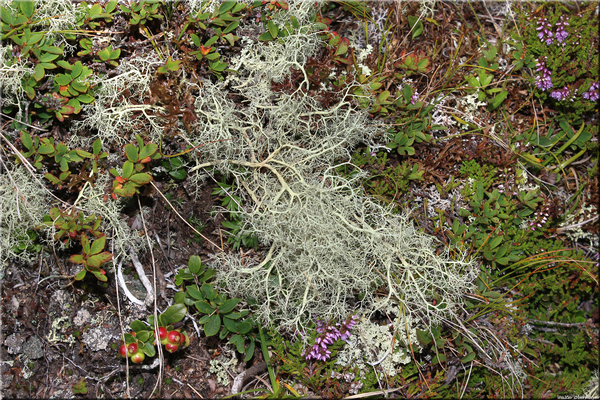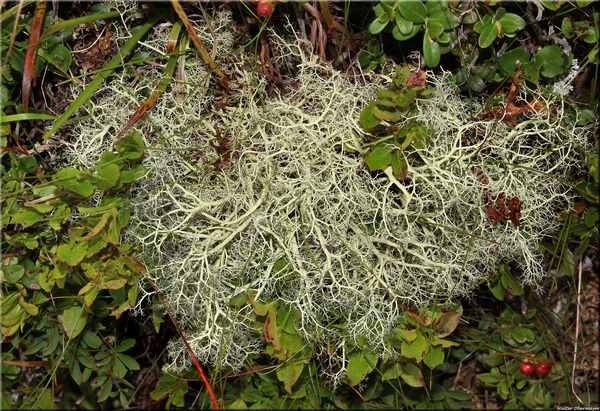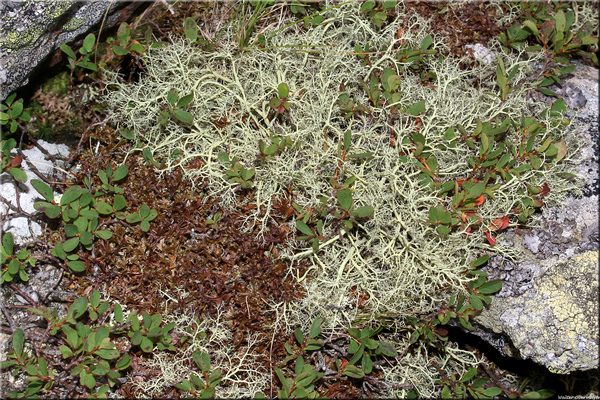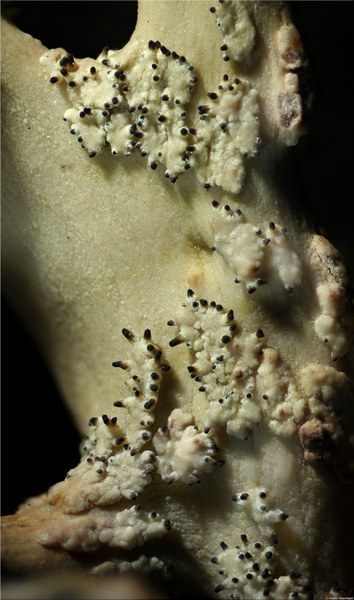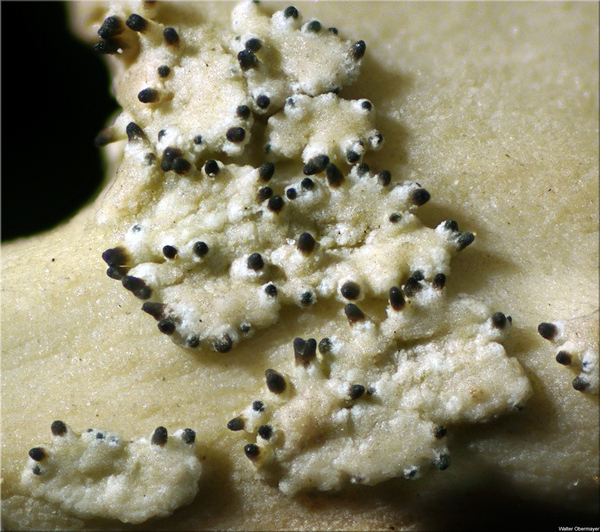Alectoria ochroleuca (Hoffm.) A. Massal.
Sched. Crit., 2: 47, 1856. Basionym: Usnea ochroleuca Hoffm. - Descr. Adumbr. Pl. Crypt. Lich., 2, 1: 7 1794.
Synonyms: Alectoria ochroleuca var. rigida (Fr.) Th. Fr.; Alectoria rigida (Fr.) Dalla Torre & Sarnth.; Alectoria variegata (Samp.) Tav.; Bryopogon ochroleucus (Hoffm.) Link; Cornicularia ochroleuca (Hoffm.) DC.
Distribution: N - Frl (Tretiach & Hafellner 2000), Ven (Nimis 1994, Nascimbene & Caniglia 1997, Caniglia & al. 1999), TAA (Caniglia & al. 2002, Nascimbene 2001b, 2008b, Lang 2009, Watson 2014, Nascimbene & al. 2022), Lomb, Piem (Isocrono & al. 2004, Morisi 2005), VA (Piervittori & Isocrono 1997, 1999, Piervittori & al. 2004), Emil (Fariselli & al. 2020).
Description: Thallus fruticose, more or less filamentous and shrubby, greenish grey to yellowish green, the apices concolorous or blackened, matt. Branches to 13 cm long (0.5-)1-2(-3) mm thick, stiff, elongate, prostrate to ascending, sparingly anisotomic-dichotomously divided, the apices sometimes drooping. Pseudocyphellae numerous, linear, raised, longitudinally oriented, to c. 1 mm long. Cortex of periclinally arranged hyphae; medulla white, compact. Apothecia extremely rare (not seen in Italian material), lateral, lecanorine, 3-6 mm across, with a reddish brown disc. Epithecium brown; hymenium and hypothecium colourless. Asci 2-4-spored, clavate, the K/I+ blue tholus penetrated by a faintly amyloid apical cushion with parallel or diverging flanks, the wall K/I-, surrounded by a K/I+ blue outer layer, Lecanora-type. Ascospores 1-celled, broadly ellipsoid, pigmented when old, 26-42 x 12-28 µm. Pycnidia dark, semi-immersed, mainly apical. Conidia bacilliform, 7-8 x c. 0.8 µm. Photobiont chlorococcoid. Spot tests: cortex K-, C-, KC+ pale yellow, P-, UV-; medulla K-, C-, KC-, P-, UV-. Chemistry: cortex with usnic acid, medulla with diffractaic acid.Note: an arctic-alpine, circumpolar species found on windy ridges in moss-lichens heaths, more frequent on siliceous substrata, but sometimes also occurring in areas with dolomite, with optimum above treeline. Restricted to the Alps and the Northern Apennines in Italy.
Growth form: Fruticose filamentous
Substrata: soil, terricolous mosses, and plant debris
Photobiont: green algae other than Trentepohlia
Reproductive strategy: mainly asexual, by thallus fragmentation
Commonnes-rarity: (info)
Alpine belt: rather common
Subalpine belt: very rare
Oromediterranean belt: absent
Montane belt: absent
Submediterranean belt: absent
Padanian area: absent
Humid submediterranean belt: absent
Humid mediterranean belt: absent
Dry mediterranean belt: absent

Predictive model
Herbarium samples
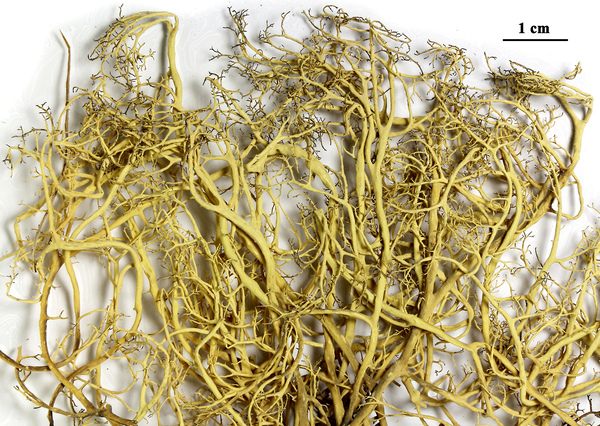
Felix Schumm - CC BY-SA 4.0
[18142], Peru, Junin, zwischen Satipo und Huancayo, zwischen Moosen und Zwergsträuchern über Granit, 3500 m. Leg. K. Kalb, 26.07.1979. KALB: LICHENES NEOTROPICI 161.
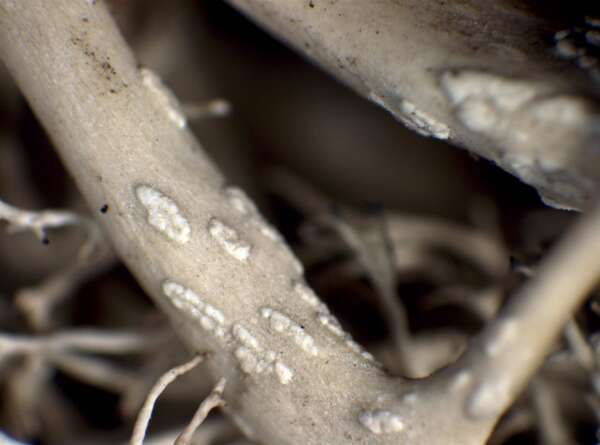

P.L. Nimis; Owner: Department of Life Sciences, University of Trieste
Herbarium: TSB (8714)
2001/11/21
detail of pseudocyphellae
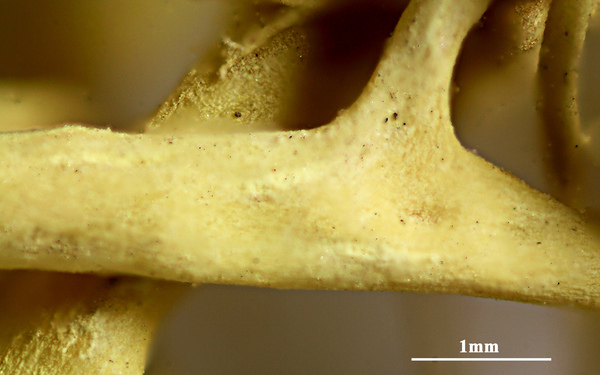
Felix Schumm - CC BY-SA 4.0
[18142], Peru, Junin, zwischen Satipo und Huancayo, zwischen Moosen und Zwergsträuchern über Granit, 3500 m. Leg. K. Kalb, 26.07.1979. KALB: LICHENES NEOTROPICI 161.
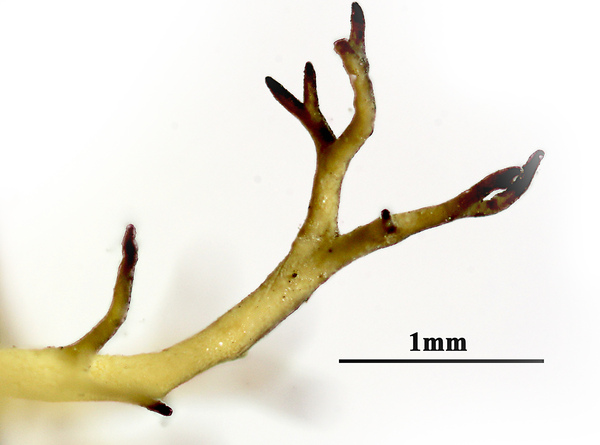
Felix Schumm - CC BY-SA 4.0
[18142], Peru, Junin, zwischen Satipo und Huancayo, zwischen Moosen und Zwergsträuchern über Granit, 3500 m. Leg. K. Kalb, 26.07.1979. KALB: LICHENES NEOTROPICI 161.


Curtis Randall Björk, - CC BY-SA 4.0
Nunavut, Northwest Territories, CanadaIsland, British Columbia, Canada
2012

Zahlbruckner A. 1926. Lichenes (Flechten). In: Engler A. (ed.): Die natürlichen Pflanzenfamilien. 2nd ed., vol 8, W. Engelmann, Leipzig, 270 pp.
Growth form: Fruticose filamentous
Substrata: soil, terricolous mosses, and plant debris
Photobiont: green algae other than Trentepohlia
Reproductive strategy: mainly asexual, by thallus fragmentation
Commonnes-rarity: (info)
Alpine belt: rather common
Subalpine belt: very rare
Oromediterranean belt: absent
Montane belt: absent
Submediterranean belt: absent
Padanian area: absent
Humid submediterranean belt: absent
Humid mediterranean belt: absent
Dry mediterranean belt: absent

Predictive model
| Herbarium samples |

Felix Schumm - CC BY-SA 4.0
[18142], Peru, Junin, zwischen Satipo und Huancayo, zwischen Moosen und Zwergsträuchern über Granit, 3500 m. Leg. K. Kalb, 26.07.1979. KALB: LICHENES NEOTROPICI 161.


P.L. Nimis; Owner: Department of Life Sciences, University of Trieste
Herbarium: TSB (8714)
2001/11/21
detail of pseudocyphellae

Felix Schumm - CC BY-SA 4.0
[18142], Peru, Junin, zwischen Satipo und Huancayo, zwischen Moosen und Zwergsträuchern über Granit, 3500 m. Leg. K. Kalb, 26.07.1979. KALB: LICHENES NEOTROPICI 161.

Felix Schumm - CC BY-SA 4.0
[18142], Peru, Junin, zwischen Satipo und Huancayo, zwischen Moosen und Zwergsträuchern über Granit, 3500 m. Leg. K. Kalb, 26.07.1979. KALB: LICHENES NEOTROPICI 161.


Curtis Randall Björk, - CC BY-SA 4.0
Nunavut, Northwest Territories, CanadaIsland, British Columbia, Canada
2012

 Index Fungorum
Index Fungorum
 GBIF
GBIF
